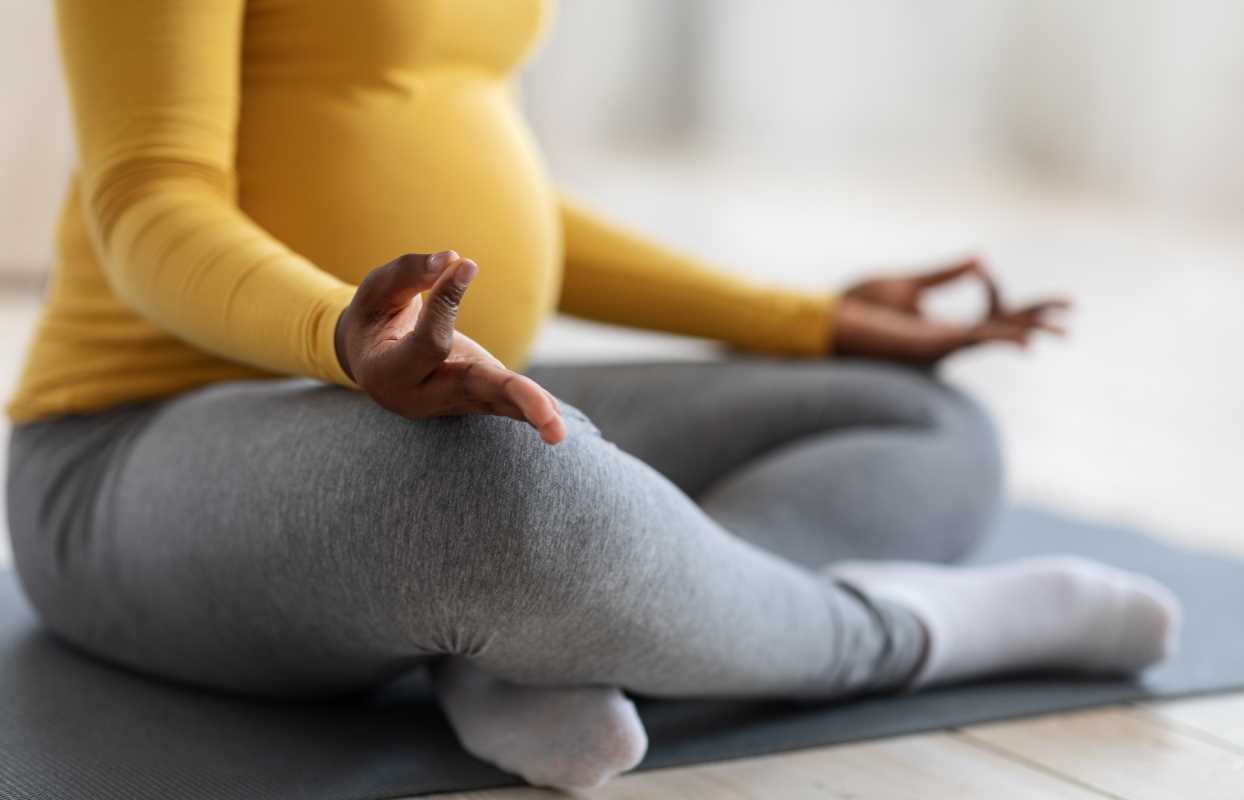Embarking on your pregnancy journey brings about a myriad of physical and emotional changes. As you approach the final stretch of your pregnancy, maintaining a sense of well-being in the third trimester becomes increasingly important. Incorporating yoga practices tailored for this stage can offer numerous benefits, helping you stay connected with your body and prepare for the upcoming arrival of your little one.
Benefits of Yoga in the Third Trimester
Yoga during the third trimester is more than just a fitness routine; it's a holistic approach that supports your physical and mental health during this transformative stage of pregnancy. Physically, yoga can help alleviate common discomforts associated with late pregnancy, such as back pain, swelling, and fatigue, which many women experience as their body continues to adapt and prepare for childbirth. By engaging in gentle stretches and strengthening exercises, you can improve your posture, reduce tension, and enhance circulation, making daily movements more comfortable and helping to ease the strain on your body. These exercises can also prepare your muscles and joints for labor, increasing flexibility and resilience.
Mental well-being is just as essential, and yoga provides excellent support. The practice encourages mindfulness and relaxation, which are invaluable tools for managing late pregnancy's emotional ups and downs. Breathing exercises and meditation, key components of yoga, help reduce stress and anxiety, maintain a sense of calm, and promote a positive mindset as you approach the big day. These techniques can also be useful during labor, helping you remain focused and centered. Yoga offers a unique opportunity to connect more deeply with your baby. Taking time to slow down, breathe, and become present allows you to tune into your body and your baby’s movements, enhancing the emotional bond between mother and child. Practicing yoga in a group setting can also provide social support, allowing you to connect with other expectant mothers and build a sense of community during this special time.
Adapting Yoga Poses
As your body changes, modifying traditional yoga poses to ensure comfort and safety is essential. One key adaptation is to avoid positions that require lying flat on your back, which can restrict blood flow. Instead, focus on side-lying or seated poses that support your back and belly. Using props like blocks, straps, and bolsters can provide additional support and stability.
Listening to your body is crucial. If a pose feels uncomfortable or causes strain, it's important to ease out of it and try a different modification. Incorporating gentle movements and avoiding deep twists or intense stretches can help maintain flexibility without overexertion. Remember, the goal is to stay active and relaxed, not to push your limits.
Recommended Yoga Poses
Certain yoga poses are particularly beneficial during the third trimester, offering support and relief. Here are a few to consider:
- Cat-Cow Stretch: Helps maintain spinal flexibility and alleviate back tension.
- Child's Pose: Provides a restful position that gently stretches the hips, thighs, and ankles.
- Bound Angle Pose: Opens the hips and promotes relaxation.
- Warrior II: Strengthens the legs and enhances balance.
- Side Stretch: Lengthens the body's sides, relieving tightness.
Incorporating these poses into your routine can enhance strength and serenity, preparing your body and mind for birthing.
Safety Precautions
While yoga can be a calming practice during pregnancy, it's essential to take some precautions to ensure your and your baby's safety. Here are a few things to keep in mind:
- Always consult with your healthcare provider before starting or continuing a yoga practice.
- Avoid holding your breath; focus on steady, deep breathing throughout your practice.
- Stay hydrated and take breaks whenever necessary to prevent overheating.
- Listen to your body and modify or skip poses that cause discomfort or pain.
- Use supportive props to maintain balance and reduce strain on your joints.
- Avoid inversions and poses that put pressure on the abdomen.
Tips for Newcomers to Yoga
If you're new to yoga, pregnancy isn't the best time to start exploring advanced poses or intense classes. Instead, here are some tips for beginners:
- Start Slowly: Ease into your practice by incorporating short sessions a few times a week, gradually increasing duration as you become more comfortable.
- Find the Right Class: Look for prenatal yoga classes specifically designed for the third trimester to ensure appropriate modifications and guidance.
- Wear Comfortable Clothing: Choose loose-fitting, breathable attire that allows for ease of movement and accommodates your changing body.
- Focus on Breathing: Concentrate on deep, controlled breaths to enhance relaxation and improve oxygen flow to both you and your baby.
- Stay Consistent: Regular practice can lead to better results, helping you maintain flexibility and reduce stress throughout your pregnancy.
- Listen to Your Body: Pay attention to how you feel during each session, and don't hesitate to rest or adjust poses as needed.
Incorporating yoga into your third-trimester routine can be a rewarding experience, offering both physical relief and mental relaxation. You can enjoy a safe and fulfilling practice by adapting poses to suit your changing body and following essential safety precautions. Remember to consult your healthcare provider before beginning any new exercise regimen to ensure it aligns with your health needs.
 (Image via
(Image via





